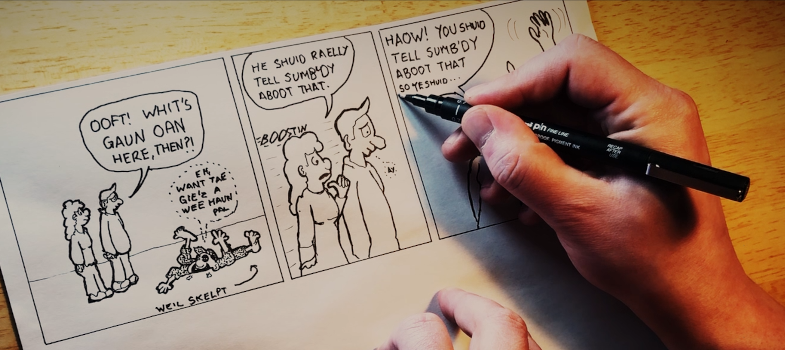Model Answer Unit 3.2 Activity 2A
These are model answers with reference to ‘Wheesht!’. You might have noted down other aspects.
This text would be suitable for learners beginning to work within First level. Several characters are introduced (the dog, the hedgehog, the owl, the frog) although the plot is fairly simple – the dog is irritating people, he seeks help and the text ends with him discovering that ‘Haud yer wheest’ means ‘Be quiet’ when his neighbour asks him to ‘Shoosh’.
The curricular areas/learning activities relevant to this text are as follows (this is not exhaustive):
Literacy and English: Understanding, analysing and evaluating
identify main ideas
answer and ask questions about the text
relate the story to personal experiences
Expressive Arts: Drama
use of voice to convey a character
use of expression in role play
Modern Languages: Listening for information
identify rhyming words
demonstrate understanding of vocabulary
Modern Languages: Listening and talking with others
give a personal response
demonstrate understanding through appropriate actions, gestures and mime
In terms of how difficult the text is, there are reasonably frequent words that are unique to Scots, such as cludgie; cantie; fantoosh; hurcheon; hoolet; and puddock. I could use Dictionaires of the Scots Language to check my understanding of those. There are some words that are shared with English, but with distinct differences in terms of spelling and pronunciation, such as dug; tae; oan; and faimly. These shared words will be familiar to those who have English as their first language. Working within Early and First level, learners may begin to understand the differences in the sounds of the shared words by repeating them after me.
Learners would need support to understand the definitions of the Scots vocabulary. Initially, helping the learners to identify and define the words that are shared between Scots and English could help boost their confidence and encourage them to work out the
definitions of the words that are unique to Scots. To help them understand the differences between the pronunciation of the Scots words, we could practice saying, ‘dog, dug; to, tae; on, oan; family, faimly. For the words that are unique to Scots, I could encourage the children to use context clues to determine meaning – for example, we could look at how the animals are described (the hurcheon is in the garden on the ground; the puddock is in a puddle…) to help the children guess which animal is which. A prepared resource could be used to help learners make sense of the vocabulary, for example pictures of the animals could be held up or shown on the whiteboard to be matched to some of the words. Learners could also use a word bank or separate learning activity, e.g. the game ‘WeeHoose’ before or after listening to the story.
Return to Unit 3.
